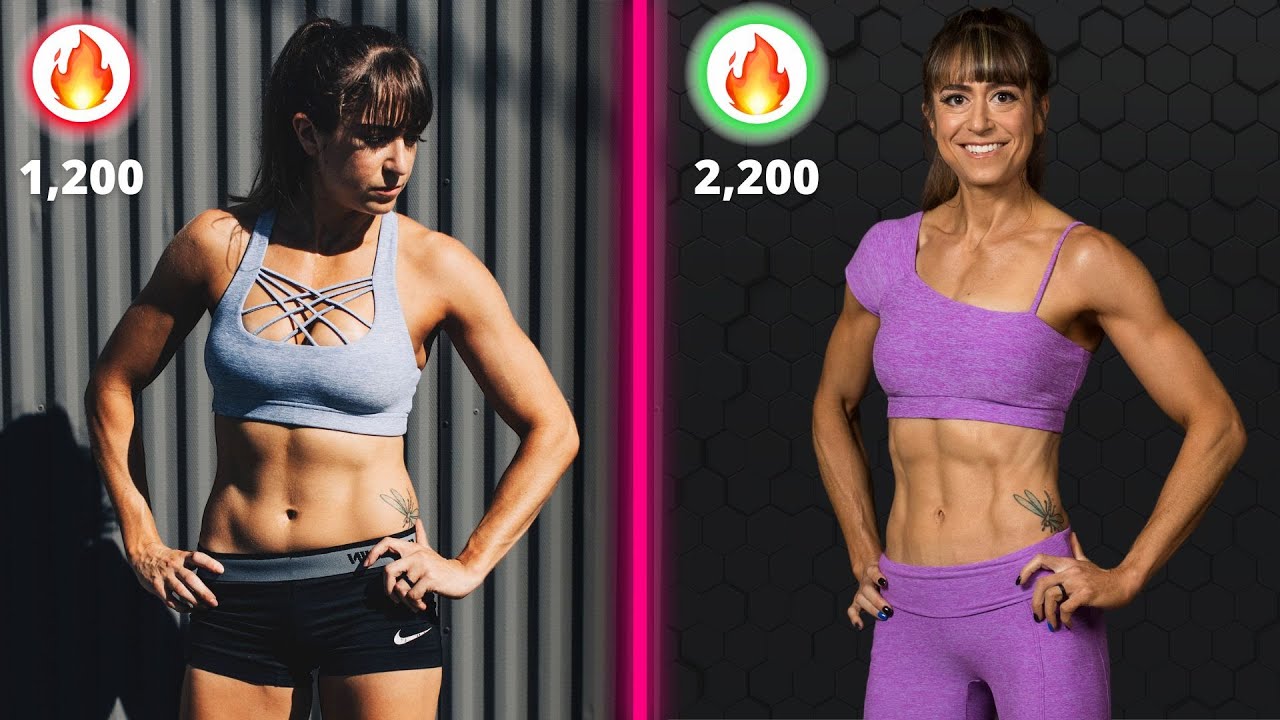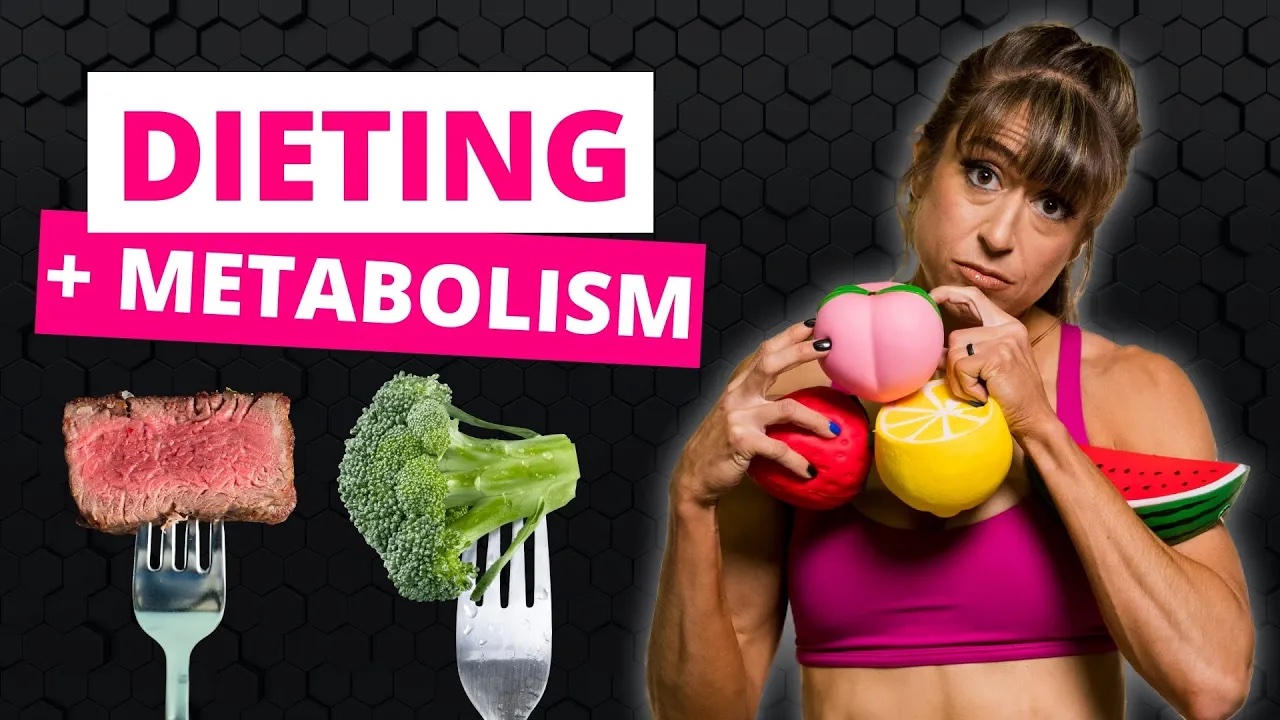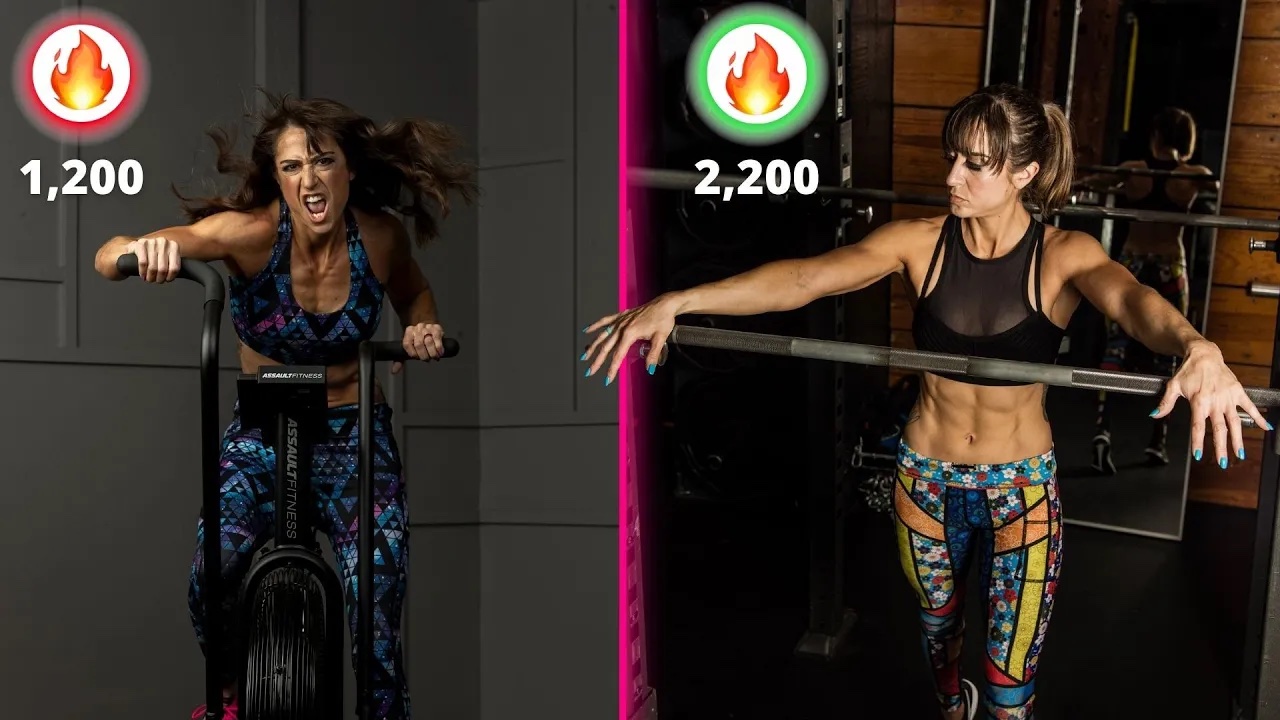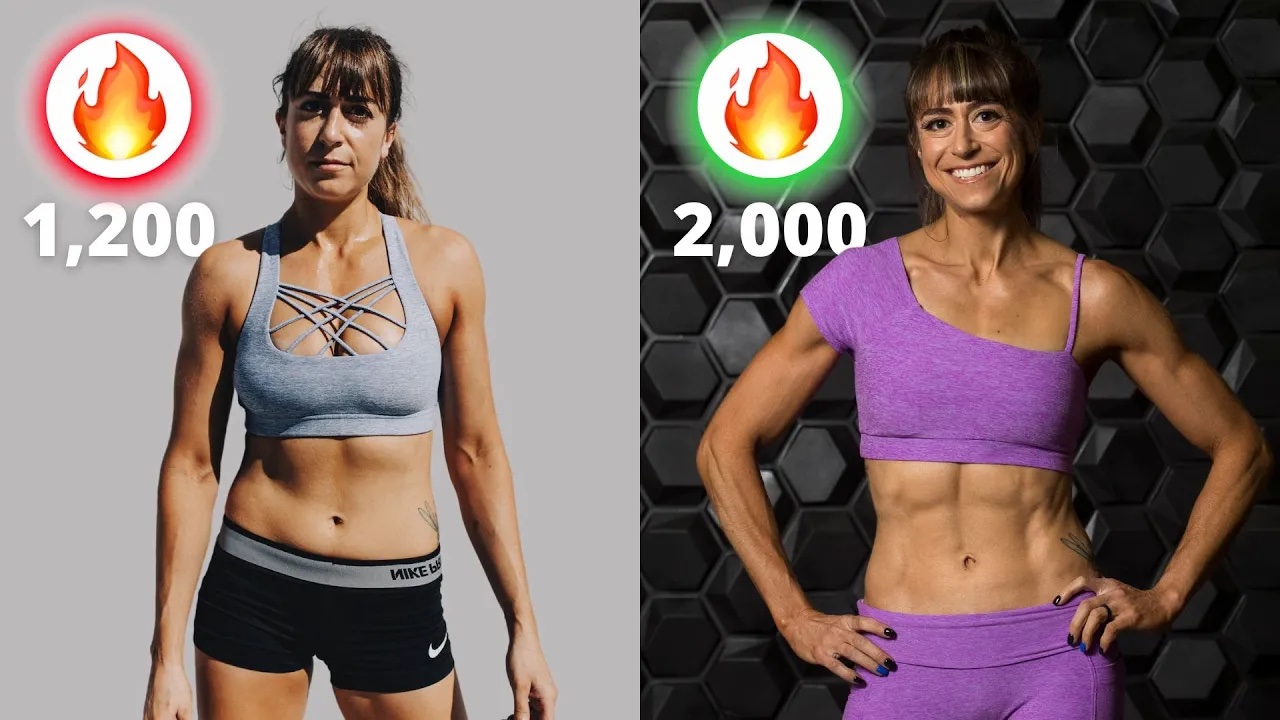
Why You’re Building Muscle (But NOT Losing Fat)
Why are you building muscle but not losing fat?
The simple answer is you’re rocking those strength workouts pushing hard in the gym but overeating and eating portions not in line with your goals.
We think calories surplus to build. So a bigger surplus should help things happen faster, right?
Nope. That’s not the case.
While a surplus is key if your main focus is on building muscle, just increasing your calories MORE past a point isn’t going to yield better muscle gains. And you’re going to gain fat as well.
You may even start to see your performance decline.
But eating too much isn’t the only reason we can struggle to lose fat while seeing ourselves build muscle.
You may be questioning what I just said, but yes I stated that overeating isn’t the only reason we can struggle to lose fat.
We can actually gain muscle while struggling to lose fat even in a technical calorie deficit after a period of extreme calorie restriction when we are finally trying to increase our calories.
Especially common during perimenopause and menopause when our hormones are in flux and we’ve experienced many failed dieting attempts where we’ve tried to slash our calories lower and lower.

With increasing your calories from your extreme deficit that has led to metabolic adaptations and hormonal imbalances, you are in a way creating a surplus over what your body has adapted to think it needs.
It’s downregulated processes to accommodate the lack of energy. But to restore balance, you need to increase calories. And as your body has the fuel it needs, it will seek to put on lean muscle over first losing fat.
Lean muscle is involved in so many important processes for our body so building it to restore metabolic health and balance is key. And ultimately, this WILL help us lose fat and look leaner.
It can just be frustrating in the process as we see the scale increase and even clothing feels tighter as we add muscle before we lose the fat.
But there are ways to help yourself see that recomp happen faster. And I want to talk through not only the nutritional changes you need first, but also two forms of cardio that may be key.
First the nutritional changes…
It really comes down to the thing most people avoid doing…Adjusting your macros.
Yup. Macros. The non diet diet so many people avoid because it seems hard and tedious and boring.
Who wants to weigh and measure everything?!
But it’s like baking a cake, if you weigh and measure everything in the recipe, it’s going to turn out better the first time.
Macros and tracking them are your recipe for results, especially if you have a plan laid out. Weigh and measure your portions so you know what you’re truly consuming.
It even gives you the power to tweak and adjust.
The thing is, there is no way around hard changes if we want a new and better result, especially as fast as possible.
And the more we take time now to learn and truly do things precisely, the better and faster things turn out.
While you may feel you’re eating clean and healthy already, that doesn’t mean your portions are fully in line with your body, needs or goals.
Each macronutrient – the proteins, carbs and fats we consume – all impact our body in different ways.
How we adjust the portions we consume therefore has an impact.
Less active, you may need fewer carbs. More active, you may need more and not eating enough could lead to thyroid issues.
Fear fat may make you fat? Under eating fat with the increase in inflammation we see during menopause could only be making things worse.
And not eating enough protein? That may be why you’re struggling to see recomp as fast as you’d like!
Protein is more key than we realize if we want to lose fat as we put on muscle, especially as we get older as we don’t use it as efficiently.
As you retrain your body to eat more, and I say RETRAINING it for a reason as you are allowing it to adjust bodily processes to account for the fact that you do now have adequate fuel, you will want to focus on 35-40% of your calories coming from protein.
This not only fuels that muscle growth but helps you burn more calories at rest. And it isn’t as easily stored as fat.
And we have to remember that protein doesn’t just go to helping us build and repair our muscle tissue. It’s essential for our bone and brain health as well as the repair of other tissues. It has a positive impact in so many ways and can only assist in that metabolic healing and hormonal balance process.
That’s why it can help us keep seeing those muscle gains while helping us start to shift the fat when we’ve been struggling.
And if you are strategically wanting to build muscle and in that calorie surplus consciously, maintaining a protein minimum of 30% can even help you continue those muscle gains while avoiding gaining any more fluff in a surplus.
Now as important as your macros and diet are to helping you see the fat loss you want while building muscle, your workouts still really matter.
You can’t out exercise your diet, but when both your diet and your workouts work together, results are better and faster.
Strength workouts are hands down essential. They help you build that lean muscle and ultimately improve your metabolic health. They will help you look leaner long term.
But, specific forms of cardio can help in this situation where you are seeing those muscle gains, but the fat isn’t budging.
This doesn’t mean start logging those miles and turn to tons of steady state cardio. Actually avoiding this is key.
Instead you want to focus on two specific forms of cardio – SIT or sprint interval training – and walking.
First, walking…
Walking is a great de-stress which can promote optimal body composition through improving insulin sensitivity and hormonal balance and help us burn more calories at rest to improve our metabolic health while not fatiguing us for future lifting sessions.
The fact that it is low intensity and more restorative allows us to really optimize our strength workouts to get the most value from them.
Because prioritizing building muscle in our workouts is key even if we want to lose fat. And if we’re too tired to push hard in our lifting sessions, we won’t create that stimulus for muscle growth.
Now the second form of cardio that can be helpful to improve our metabolic health, especially during menopause, is SIT.
Sprint interval training can help improve hormone levels and promote muscle growth whereas steady state is catabolic to muscle tissue. It can also help us better utilize mobilized fatty acids aka assist in better fat loss.
And these sessions aren’t time-consuming or hard to include. Even just 5-10 minutes at the end of a strength day can have value.
More isn’t necessarily better either. Intensity of these short bouts is what makes them work. So adding in more would defeat the purpose.
To add in SIT, you want to use work to rest intervals of 8-30 seconds sprinting to 12-90 seconds resting. So rest does vary from half the time you sprinted up to 3 times the length you worked.
About 5-8 rounds is all that is needed with 10 rounds max being done. 2-3 times a week of SIT along with walking is an amazing addition to your lifts.
These are hard, quick bursts where you are focused on maximal effort. They should feel horrible but be over before you know it.
And don’t just think longer work and less rest is better! The combination is what helps improve your recovery, work capacity and see that body recomp magic happen!
So if you’ve been frustrated that you’ve gained muscle but not lost fat, step back to assess your current calorie intake. If you’ve gone crazy with the surplus, back it off. You’re retraining your body to eat more, don’t stop trying to bump calories.
But with both take a look at your macros. Focus on that protein! And then consider tweaking your routines to include these two forms of cardio!
It can be hard to embrace this process and KEEP GOING when it feels like results aren’t happening…That’s where having a guide and outside perspective can be ke!
–> Learn More About My 1:1 Coaching For The Custom Plan And Guidance To Help






